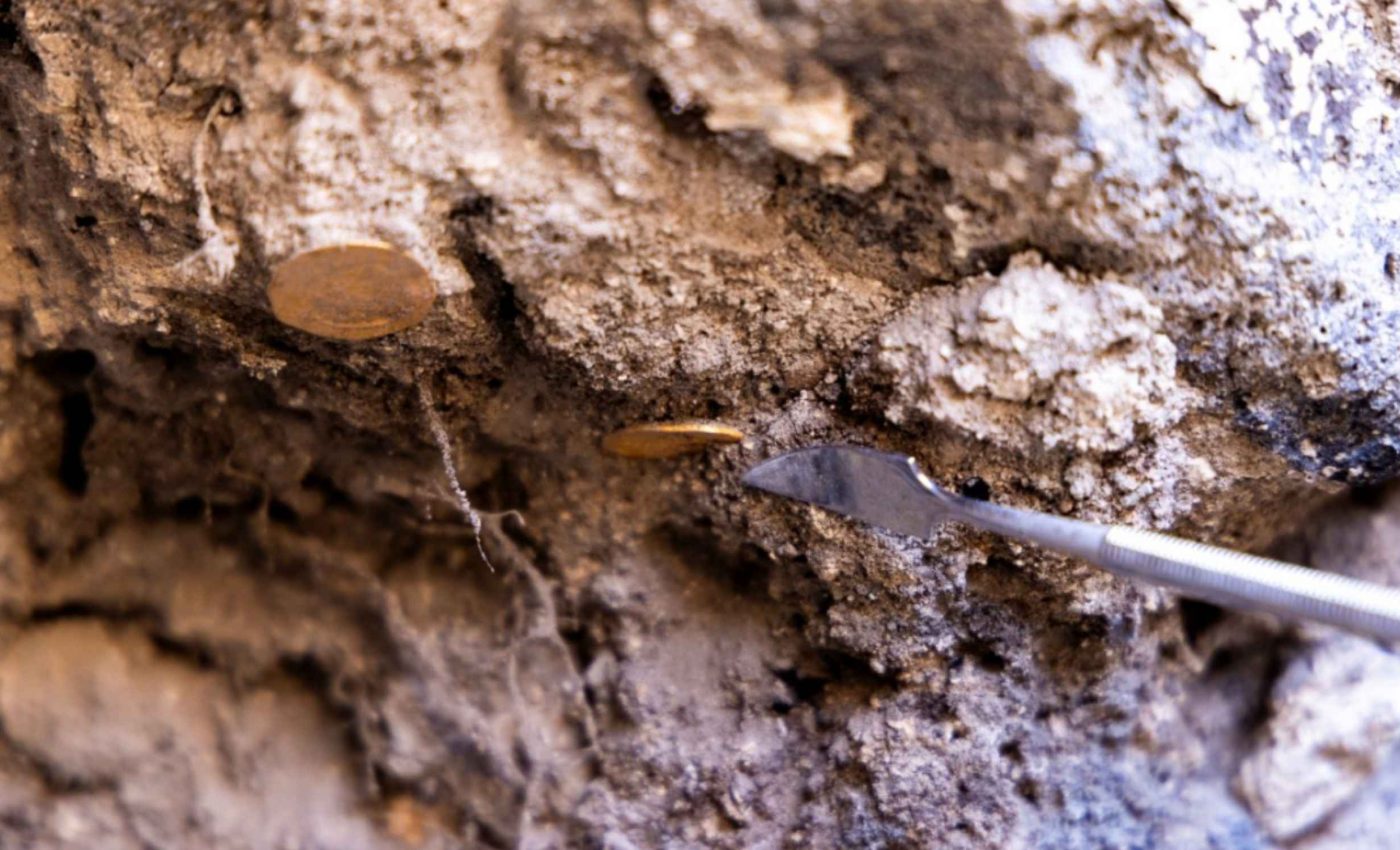
1,400-year-old Byzantine treasure discovered with a metal detector
On the eastern slopes above the Sea of Galilee, a man with a metal detector searching for treasure stumbled on a cache of late Byzantine coins and jewelry, a find described in detailed coverage.
Archaeologists say the hoard includes 97 gold coins and dozens of delicate pieces from earrings set with pearls, colored stones, and glass.
After the team lifted the first coins from the soil at Hippos, the ancient city on the Golan Heights, they called in specialists to document the hoard and its setting.
“It is among the five largest gold hoards of that period found in the region,” said Michael Eisenberg, an archaeologist at the University of Haifa and co-director of the excavation.
The coins span emperors from Justin I to the early years of Heraclius, a tight window that helps fix when the stash went into the ground.
The discovery provides valuable insight into the political and economic landscape of the early seventh century, linking the region’s shifting power dynamics with patterns of wealth distribution and trade during the closing years of Byzantine rule.
What the Byzantine coins tell us
The collection includes several types of high-value coins and their smaller denominations, which were standard units of currency used throughout the Byzantine Empire.
One of the smallest coins, a tremissis, appears to have been struck in Cyprus around 610 during the revolt that brought Heraclius to the throne.
That little piece links a local story to events that shook the empire, since the revolt minted issues at several mints as power shifted.
The fabric impressions preserved on some coins point to a cloth bag that once held the lot. Tiny details like that help date how the hoard was packaged and hidden.
Artistry behind the jewelry
The earrings and ornaments found alongside the coins show the high level of craftsmanship in Byzantine goldsmithing.
They include intricate filigree patterns, pearls, and semi-precious stones set into delicate goldwork that would have required remarkable precision.
Archaeologists believe such pieces were likely owned by wealthy citizens or members of the clergy, reflecting both fashion and faith in the period.
Goldsmiths of the sixth and seventh centuries combined artistic design with metallurgical skill, techniques documented in surviving Byzantine workshops from Constantinople to Antioch.
Their methods relied on hammering, soldering, and granulation, producing jewelry that balanced strength with elegance.
The newly discovered pieces help fill gaps in understanding how luxury items circulated through provincial cities like Hippos and how local artisans may have adapted imperial styles to regional tastes.
Byzantine city, coins, and conflict
Why hide so much wealth? In 614, armies of the Sasanian Empire swept through Byzantine Palestine, and scholars have traced how that offensive destabilized cities across the region.
Residents in threatened towns often buried valuables they could not carry. Some never returned to retrieve them.
Another force hit the region in the mid eighth century when a powerful earthquake toppled buildings from the Jordan Valley to Galilee, an event dated to 749 in a careful analysis.
The decline and abandonment of Hippos fits within that chain of turmoil. A buried hoard makes sense against that backdrop.
Daily life in Byzantine Hippos
Beyond the treasure itself, the excavation site reveals traces of everyday life in the Byzantine city.
Archaeologists have found church mosaics, pottery fragments, and remnants of homes that suggest Hippos was once a thriving Christian community with strong trade connections and skilled local artisans.
These findings help paint a clearer picture of how people lived, worked, and worshiped in this hillside settlement.
Researchers believe the wealth buried here may have belonged to merchants or clergy who sought to protect their valuables during times of invasion.
Their possessions, frozen in time, now provide a rare glimpse into the social fabric of a community balancing prosperity, faith, and uncertainty at the edge of a changing empire.
Archaeologists and ancient money
Coins are time stamps. Portraits, mint marks, and inscriptions let experts read decades and sometimes specific years.
Those clues turn a pile of gold into evidence about trade routes, pay scales, and political shifts. It also shows how people managed risk when power changed.
“When you find coins and jewelry nearly 1,400 years old that look new, it is a rare experience,” said Eisenberg.
For the team, the mix of denominations matters as much as the shine. Fractions in gold suggest daily transactions running at higher value than copper could handle.
The researchers will read each coin, document each earring fragment, and compare the whole set to other finds from the Galilee. That work will sort out mint origins, circulation patterns, and purchasing power.
They will also try to place the hoard within a map of seventh century emergency deposits. That is how a stunning discovery turns into data for history classes and museum labels.
—–
Like what you read? Subscribe to our newsletter for engaging articles, exclusive content, and the latest updates.
Check us out on EarthSnap, a free app brought to you by Eric Ralls and Earth.com.
—–













